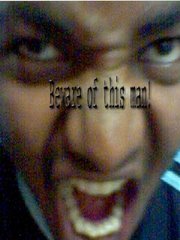 In 1930 in Ethiopia, Ras Tafari Makonnen was crowned King of Kings and Lord of Lords with the throne-name Haile Selassie the First and a new chapter in the struggle, one with religious connotations, was opened. God was finally real and the Christian doctrine was no longer the monopoly of white missionaries with headquarters in Rome. The bible was studied and any reference to Ethiopia took on added significance.
In 1930 in Ethiopia, Ras Tafari Makonnen was crowned King of Kings and Lord of Lords with the throne-name Haile Selassie the First and a new chapter in the struggle, one with religious connotations, was opened. God was finally real and the Christian doctrine was no longer the monopoly of white missionaries with headquarters in Rome. The bible was studied and any reference to Ethiopia took on added significance.
Ethiopia, being attacked by Italy at the start of the second world war galvanized interest and concern in the struggle of good over evil. During this period, the Ethiopian World Federation was formed in the United States of America under the guidance of the Emperor Haile Selassie the First, to unite the support for the restoration of Ethiopia's sovereignty. After the war, and the defeat of Italy, the Emperor showed his appreciation by donating land at Shashamane, to anyone of African descent in the west who wanted to return to the mother-land. Time, however, was creating Africans with various aspirations. New generations were producing new societies of Africans in the West.
Independent nations were beginning to form and black majority rule was imminent. In Jamaica, the reverence of Emperor Haile Selassie continued to create distinguishable movements, such as Nyabinghi, the Ethiopian National Congress or Bobo dreads, the Twelve Tribes of Israel.
The Twelve Tribes of Israel, founded by the Prophet Gad, has added another dimension in the liberation movement, to include liberation for all races through the teaching of the bible, and the acceptance of Jesus Christ. Membership is not limited, but inclusive. By identifying the spiritual sons of Jacob and finding truth for oneself through reading the bible "a chapter a day", man can find salvation. The divine lineage continues through the Ethiopian Monarchy, the seed of David, of which it is said, "The scepter shall not depart from Judah, nor a lawgiver from beneath his feet, until Shiloh comes and unto Him will be the gathering of the people."
 |
Rastafarians have developed a unique language and outward appearance, best exemplified by the dreadlock Hairstyle. Rastafarians also have placed a high value on smoking marijuana (ganja), which is used for meditation and to reflect completely on the word of Jah. Rasta has never been strictly defined, but it continues to exist it pockets all over the world, though mainly in Jamaica. The demise and common man's death of Haile Selassie in 1974 discouraged some believers, and Rastafarians have never been liked by the authorities due to its endorsement of marijuana and its excitation of violence. Nevertheless, Rastafarians continue to follow the word of Jah: "ever-loving, ever-fearful, ever-sure as Selassie

2 comments:
....and Rastafarians have never been liked by the authorities due to its endorsement of marijuana and [its excitation of violence].
Ganja excite violance is that what is meant here? is it proven
No what it means is that the ganja reduces or makes the urge to be violent to exit the mentality of the smoker...
Post a Comment